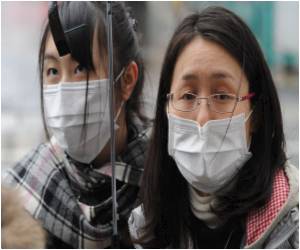Every year 29th, August is observed as the International Day Against Nuclear Tests. The 64th session of the United Nations General Assembly declared this day on 2 December 2009.

What is Nuclear Testing?
Most countries that develop nuclear weapons invariably carry out nuclear testing to test the effectiveness and explosive capacities of their nuclear weapons. Nuclear testing is a sign of a country’s nuclear prowess. The United States was the first to test in July 1945 followed by the former Soviet Union in 1949. This was followed by the United Kingdom in 1952, France in 1960 and China in 1964. India carried out the Pokhran-II test in 1998 which was the second one. The first time India tested was in 1974.Hazards of Nuclear Testing
Nuclear testing pose health hazards as it releases radioactive materials which are usually dispersed in the air and on the earth’s surface. Nuclear weapons have been tested in all environments since 1945 whether in the atmosphere, underground or underwater. The residual wastes of these tests remain for many years.Exposure to radiation can damage organs, bones, skin and eyes. Radiation is particularly associated with increase in the incidence of cancer like leukemia, thyroid, lung and breast cancer.
Radiation can also cause mutations in the genes of an individual. These genes can be transmitted to their offspring, thereby increasing the chances of genetic disorders.
Radioactive materials on the surface can seep into plant roots and in turn be consumed by animals. Consuming contaminated vegetation and animal food source can indirectly damage human health too.
Considering the long term effects and damages caused by nuclear exposure, it is significant that the world adopts a ban on nuclear testing. In the 1950s there was widespread concern regarding the damage done by the dispersal of radionuclide-strontium-90 due to nuclear testing. This material contaminated mothers’ milk and in turn affected the teeth of babies. Advocacy from several groups led to the conclusion of the Partial Test Ban Treaty (PTBT), where the involved countries agreed not to conduct land, outer space and under water tests. The ban was however, not on testing nuclear weapons underground.
International Day Against Nuclear Tests 2015
The International Day against Nuclear Tests was meant to inform and educate nations, member states, non-governmental organizations, academic organizations, youth networks and media on the critical need for a nuclear-free world. The preamble of the resolution states, “…that every effort should be made to end nuclear tests in order to avert devastating and harmful effects on the lives and health of people…and, that the end of nuclear tests is one of the key means of achieving the goal of a nuclear-weapon-free world.” According to UN Secretary-General Ban Ki-moon, “A world free of nuclear weapons would be a global public good of the highest order.”Several civilian activities mark this day across the world as advocacy and activist organizations encourage a total ban on nuclear testing. It is important for civilians and government of countries across the globe to be aware of the dangerous fallouts of nuclear testing. The exposure can cause harm across generations and threaten the natural environment. Marking this day is important to drive this point across the globe that nuclear testing is unsafe for both nature and humans.
References:
1. http://www.un.org/en/events/againstnucleartestsday/info.shtml2. http://globaldimension.org.uk/calendar/event/6670
3. http://www.unis.unvienna.org/unis/en/events/2010/nonnuclear-tests-day.html
4. http://www.icanw.org/
5. https://www.ctbto.org/nuclear-testing/the-effects-of-nuclear-testing/general-overview-of-theeffects-of-nuclear-testing/
Source-Medindia









